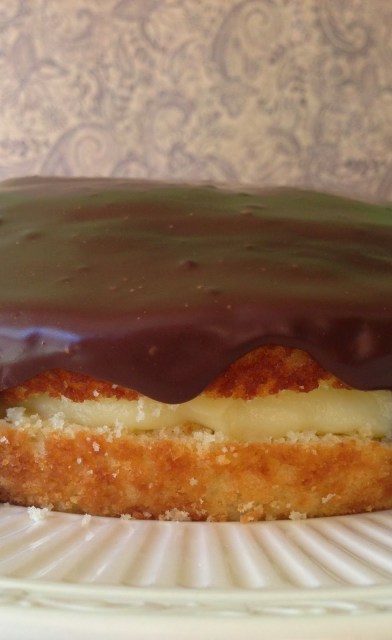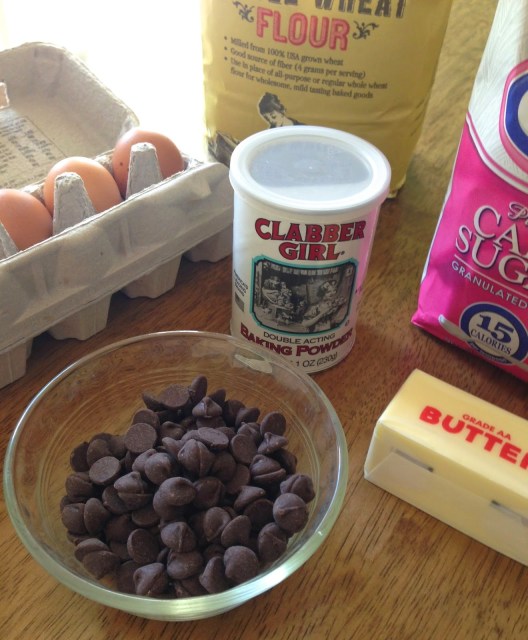
In 2003, the state of Massachusetts made a bold decision. They designated the Boston Cream Donut as the OFFICIAL DONUT of the state. Good call, Massachusetts. Both on your choice of donut and the choice to have an official state donut. (Massachusetts is, in fact, the only state to have an official donut. The other 49 states need to rectify this immediately.) So it’s all well and good that the people of the Bay State get to enjoy this monument to deliciousness in an official capacity.
But guess what, Massachusetts? Somebody beat you to it.
ME!!!!
The Boston Cream donut has been MY official donut since at least 1991.
For as long as I can remember, I have ALWAYS ordered a Boston Cream donut whenever possible at a donut shop. It started when my grandparents from Iowa would come to town and take my brother and me out for lunch at Sizzler and then to Dunkin Donuts for dessert. (The year 1991 is somewhat arbitrary–I was 9 then, which is about when I first recall this ritual with my grandparents starting.) Even at that young age, I can remember the sureness of my decision. No strawberry frosted, no long johns, no chocolate glazed. I want the grand daddy, that pie-within-a-cake, dream-within-a-dream ALL-STAR Boston Cream Donut. Dark chocolate frosting, buttery cake, and glorious cream filling–can you see why I (and, oh yeah, Massachusetts) have appointed it my official donut?

Since it was recently my birthday and I always enjoy making my own birthday cake, I decided this was the year to try actually making a Boston cream pie (which, if you didn’t know, is actually a cake. So in donut form it’s a donut that’s a pie that’s a cake. Still with me?) For as many times as I’ve eaten Boston cream donuts, it’s rare that I have Boston cream pie–and still rarer (as in, never) that I’ve had a homemade Boston cream pie. So giving it a try sounded fabulous. I actually happen to have a cookbook all about the food of Boston, so I pulled it out to find….

Nothing! This cookbook about the distinctive recipes of Boston does not contain a Boston cream pie recipe. Inexcusable.

(Though, actually, otherwise it’s a pretty good cookbook.) Anyway, thank goodness for the Internet, which of course yielded countless Boston cream pie recipes. Sifting through them revealed that most of the top hits had only four-star or less ratings, and I knew this birthday called for a five-star cake. I ended up deciding on one from Saveur.com that had all five-star reviews, and was not disappointed! Neither, I’d say, were the other ten or so people who shared it with me. My neighbor, who recently traveled to Boston, said she thought it was better than the version she’d had at a famous bakery there. The chocolate on top is nice and dark–not too sweet–the cake is fluffy, and the vanilla cream set up perfectly, with just the right amount of spreadability.

All in all, it made for a happy birthday cake realization of my Official Donut–a cake inspired by a donut inspired by a cake (with the name of a pie).

Boston Cream Pie
(Slightly adapted from Saveur.com)
Ingredients:
For the cake:
1 1/2 c. all-purpose flour
2 tsp. baking powder
1/2 tsp. kosher salt
12 Tbsp. butter, softened
1 c. sugar
2 tsp. vanilla extract
3 eggs
2/3 c. buttermilk (see my baking substitutions page for other options)
For the filling:
1 c. sugar
1/4 c. corn starch
1/2 tsp. kosher salt
6 egg yolks
1 1/2 c. milk
4 Tbsp. chilled unsalted butter, cubed
2 tsp. vanilla extract
For the glaze:
4 oz. 60% bittersweet chocolate, finely chopped
1/2 c. heavy cream
Directions:
1. Make the cake: Preheat oven to 350 degrees and grease a 9″ round cake pan well. Whisk together flour, baking powder, and salt in a bowl; set aside. In a large bowl, beat butter, sugar, and vanilla until fluffy, about 3 minutes. Add eggs one at a time, beating well after each addition. Alternately add dry ingredients and buttermilk and beat until just combined. Pour into prepared pan and smooth the top. Bake about 35 minutes or until a toothpick inserted in the center comes out clean. Cool in the pan 15 minutes, then invert onto a wire rack to cool completely.
2. Make the filling: In a 4-quart saucepan, whisk together sugar, corn starch, and salt. Add egg yolks and whisk until smooth, then stir in milk. Heat pan over medium heat and cook, stirring constantly, until thickened, about 10 minutes. (Be especially watchful in the last 3 minutes or so, as the mixture goes from liquid-y to pudding-y quite quickly.) Remove from heat and add butter one cube at a time, whisking until smooth. Stir in the vanilla extract. Transfer the pudding to a bowl and cover with plastic wrap. Chill until firmed, at least 2 hours.
3. Make the chocolate glaze: Place chopped chocolate in a bowl. In a 1-quart saucepan over high heat, bring heavy cream just to a boil. Pour cream over chocolate and let sit 1-2 minutes. Slowly stir the chocolate and cream until smooth and shiny, then set aside to cool for 10 minutes.
4. Assemble the cake: Using a serrated knife, carefully slice cake horizontally into two layers, with the top layer being slightly smaller than the bottom. Spread the chilled pudding over the top side of the bottom layer, then cover with the top layer. Pour chocolate glaze evenly over the top of the cake, letting it drip down the sides. Refrigerate until glaze is set, at least 30 minutes. Serve chilled or at room temperature.
Generously serves 10. (But could be stretched for 12!)











